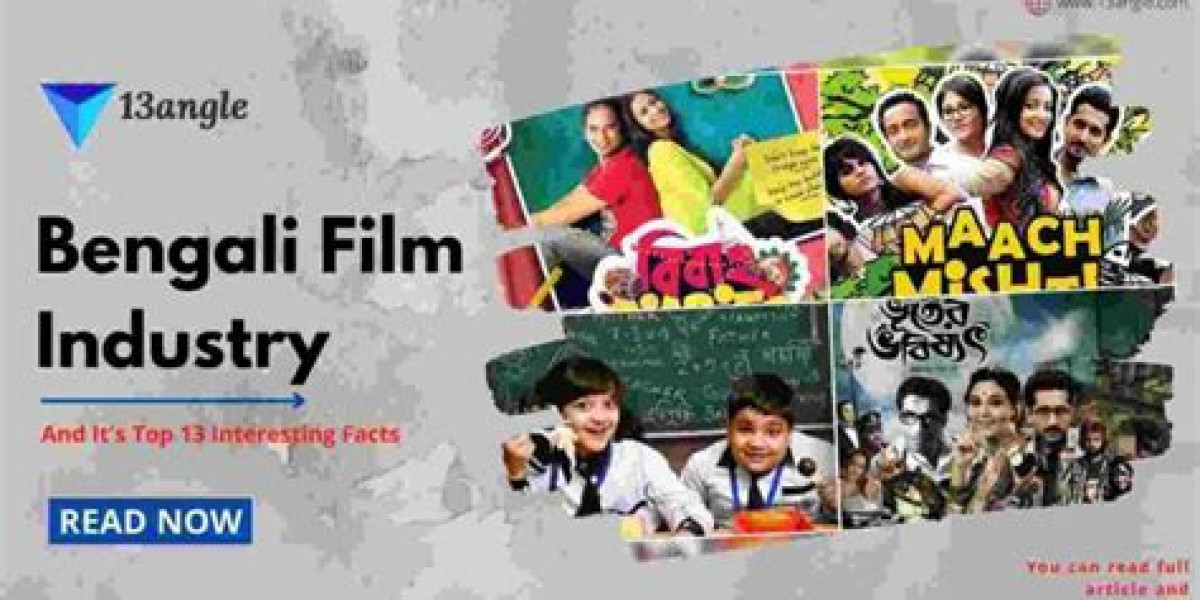Bengali cinema, often referred to as Tollywood (named after the Tollygunge region in Kolkata where the industry is based), has a rich and storied history that dates back to the early 20th century. It is one of the most intellectually vibrant and artistically significant regional film industries in India, producing films that often blend social realism, literary depth, and artistic innovation.
Over the decades, Bengali cinema has evolved from black-and-white classics to thought-provoking contemporary masterpieces, all while maintaining a unique identity that differentiates it from mainstream Bollywood. This article explores the evolution, influence, and resurgence of Bengali cinema, along with the themes and filmmakers that have defined its course.
The Golden Era of Bengali Cinema
The 1950s to the 1970s are widely considered the golden era of Bengali cinema. This period saw the emergence of iconic filmmakers such as Satyajit Ray, Mrinal Sen, and Ritwik Ghatak—names that brought global recognition to Bengali cinema. Satyajit Ray’s debut film, "Pather Panchali" (1955), remains a landmark in world cinema. With its humanistic storytelling and neorealistic portrayal of rural Bengal, it was the first Indian film to win international acclaim, including at the Cannes Film Festival.
Mrinal Sen’s politically charged narratives, such as "Bhuvan Shome" and "Calcutta 71", tackled class disparity and social unrest, while Ritwik Ghatak’s films like "Meghe Dhaka Tara" and "Subarnarekha" poetically depicted the trauma of Partition. These filmmakers laid the foundation for what many consider the soul of Bengali cinema—art that reflects society.
Themes and Characteristics
Bengali cinema is known for its deeply rooted connection to Bengali literature, poetry, and theater. Many films are adaptations of works by celebrated Bengali authors such as Rabindranath Tagore, Sarat Chandra Chattopadhyay, and Bibhutibhushan Bandyopadhyay. This literary backdrop contributes to the rich narrative depth and character development seen in Bengali films.
Another defining feature is the subtle yet powerful portrayal of societal issues. From caste and gender politics to economic inequality and existential dilemmas, Bengali films often prefer introspection over spectacle. This has resulted in a body of work that not only entertains but also educates and provokes thought.
Modern Bengali Cinema: A Cultural Revival
After a lull in the 1980s and early 1990s, Bengali cinema began witnessing a resurgence in the early 2000s. A new wave of directors such as Rituparno Ghosh, Kaushik Ganguly, Srijit Mukherji, and Aniruddha Roy Chowdhury brought fresh perspectives and modern storytelling techniques to the screen.
Rituparno Ghosh, in particular, played a pivotal role in redefining contemporary Bengali cinema. His films like "Unishe April", "Chokher Bali", and "Raincoat" explored themes of sexuality, human relationships, and gender identity, often ahead of their time. Meanwhile, Srijit Mukherji’s genre-bending approach in films such as "Autograph", "Baishe Srabon", and "Vinci Da" has helped bridge the gap between commercial success and critical acclaim.
Kaushik Ganguly’s films like "Nagarkirtan" and "Bisorjon" have received national awards and international accolades, further proving that Bengali cinema continues to be a force in storytelling with purpose and poignancy.
Independent and Art-house Films
In recent years, the rise of independent filmmakers and digital platforms has further diversified Bengali cinema. These filmmakers are unafraid to experiment with unconventional narratives and subjects, giving voice to marginalized communities and untold stories. Films like "Cosmic Sex", "Shabdo", and "Ahare Mon" push the boundaries of traditional storytelling and show that Bengali cinema is as much about innovation as it is about tradition.
Film festivals such as the Kolkata International Film Festival (KIFF) provide a much-needed platform for indie creators, helping them reach a broader audience and gain international visibility.
Women in Bengali Cinema
Bengali cinema has historically portrayed strong female characters, often subverting stereotypes. From Suchitra Sen and Madhabi Mukherjee to contemporary stars like Rituparna Sengupta, Jaya Ahsan, and Swastika Mukherjee, women in Bengali films have often been at the center of narratives.
Moreover, female filmmakers like Aparna Sen have made significant contributions. Her directorial ventures such as "36 Chowringhee Lane", "Mr. and Mrs. Iyer", and "Ghawre Bairey Aaj" explore complex emotional landscapes and feminist themes with great nuance.
Bengali Cinema in the Global Arena
While Bollywood often dominates international headlines, Bengali cinema has quietly built a reputation in global film circles. Films by Satyajit Ray continue to be studied in film schools around the world, and newer entries into international festivals have maintained this tradition of excellence.
Bengali diaspora communities across the globe also support and celebrate this cinematic culture through screenings, festivals, and online platforms. With subtitles and streaming services, these films are now more accessible to non-Bengali-speaking audiences than ever before.
The Road Ahead
A With an increasing number of young filmmakers, actors, and screenwriters entering the industry, there is renewed energy and optimism.
Technological advancements, global collaborations, and a growing appetite for regional content ensure that Bengali cinema is poised for another golden era. While it honors its legacy, it also dares to imagine new narratives and voices, proving that it remains a dynamic and essential part of India’s cultural landscape.







